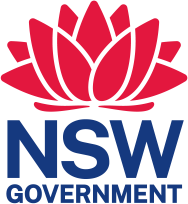Taking drugs impairs driving skills
Driving requires you to be able to concentrate, think clearly and react quickly. Even some drugs you get from prescriptions or over the counter counter medications can affect your ability to drive. Always read the labels and look out for warnings about its affect on driving. If you’re in doubt talk to the doctor or pharmacist.
Driving while under the influence of drugs is extremely dangerous. Drugs affect driving in a number of ways. Drugs can cause slower reaction times, erratic and aggressive behaviour, difficulty concentrating, nausea, hallucinations, panic attacks, paranoia, tremors and fatigue. These conditions make it very dangerous to get behind the wheel.
Cannabis
Cannabis can affect your driving in a variety of ways. Studies have shown that cannabis impairs your attention so it makes it difficult to focus on things for long periods of time which is obviously a dangerous thing if you’re driving. It also slows your reaction time so you’ll be slower responding to hazards or traffic lights you encounter on the road. It can also distort perception which is a danger as you need perception to judge distances and speed of on-coming vehicles. Cannabis relaxes people to the point where they become drowsy and more likely to fall asleep at the wheel.
▪ The latest research shows your risk of a crash if you’re driving under the influence of cannabis is two or three times higher (than driving sober) Evidence suggests that using cannabis and alcohol together, even at low doses, could have a worse effect on driving than either cannabis or alcohol alone.
Cocaine
Cocaine is a stimulant – it speeds up the activity of the brain and other parts of the central nervous system. Cocaine can vary in purity and strength which makes it difficult to predict the extent to which a person’s driving ability will be impaired after using cocaine.
Ecstasy
Ecstasy is similar in structure and effect to both amphetamines (stimulants) and hallucinogens. Stimulants speed up activity in the nervous system, while hallucinogens typically affect perception and can cause things to be seen or heard that don’t really exist, or are distorted. (Cocaine and Ecstasy Information sourced from the Drug Info Clearing House)
Some of the effects of cocaine or ecstasy that can affect a person’s driving include:
▪ Impaired ability to react appropriately
▪ Poor concentration and judgement
▪ Over-confidence in driving skills
▪ Feelings of increased confidence, increases the chances a person will take unnecessary risks
▪ Feelings of aggression, which may lead to dangerous driving
▪ Drowsiness as the cocaine wears off, which may increase the risk that the driver could suddenly fall asleep.
Roadside drug testing
Police have powers to carry out roadside drug testing on any driver, rider or supervising licence holder in NSW for the following drugs:
▪ Delta-9-tetrahydrocannabinol (THC) – the active component of cannabis
▪ Methylamphetamine – also known as speed, ice, crystal meth, or base
▪ Methylenedioxymethylamphetamine (MDMA) – also known as ecstasy
How the testing works
Police will conduct a preliminary oral fluid test through the window of your vehicle. You will be required to lick the test pad of a device. If you test negative you will be able todrive away. If you test positive you will have to provide a second oral fluid sample. If the presence of one or more of these three drugs is confirmed you will receive a Court Attendance Notice with the charge of driving with the presence of an illicit drug.
Driving under the influence of drugs
Police have the power to take you to a hospital to obtain a blood and urine sample if:
▪ The manner of your driving suggests that you are impaired by drugs.
▪ You are involved in a fatal crash. The sample will be analysed for any drug, including some prescription medicines known to impair driving.
Driving with the presence of cocaine or morphine (heroin) There is also an offence of driving with the presence of cocaine or morphine (heroin) in blood or urine (unless the morphine was taken for medicinal purposes).
Source: NSW Roads and Traffic Authority.

